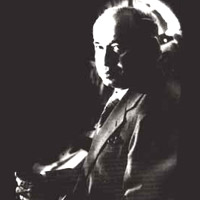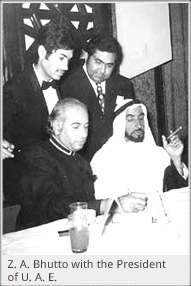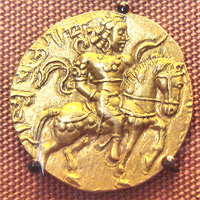Summary of Major Chemistry Laws

Here's a reference you can use for a quick summary of the major laws of chemistry. I've listed the laws in alphabetical order.
Avogadro's Law
Equal volumes of gases under identical temperature and pressure conditions will contain equal numbers of particles (atoms, ion, molecules, electrons, etc.).
Equal volumes of gases under identical temperature and pressure conditions will contain equal numbers of particles (atoms, ion, molecules, electrons, etc.).
Boyle's Law
At constant temperature, the volume of a confined gas is inversely proportional to the pressure to which it is subjected.
At constant temperature, the volume of a confined gas is inversely proportional to the pressure to which it is subjected.
PV = k
Charles' Law
At constant pressure, the volume of a confined gas is directly proportional to the absolute temperature.
At constant pressure, the volume of a confined gas is directly proportional to the absolute temperature.
V = kT
Combining Volumes
Refer to Gay-Lussac's Law
Refer to Gay-Lussac's Law
Conservation of Energy
Energy can be neither created nor destroyed; the energy of the universe is constant. This is the First Law of Thermodynamics.
Energy can be neither created nor destroyed; the energy of the universe is constant. This is the First Law of Thermodynamics.
Conservation of Mass
Also known as Conservation of Matter. Matter can be neither created nor destroyed, though it can be rearranged. Mass remains constant in an ordinary chemical change.
Also known as Conservation of Matter. Matter can be neither created nor destroyed, though it can be rearranged. Mass remains constant in an ordinary chemical change.
Dalton's Law
The pressure of a mixture of gases is equal to the sum of the partial pressures of the component gases.
The pressure of a mixture of gases is equal to the sum of the partial pressures of the component gases.
Definite Composition
A compound is composed of two or more elements chemically combined in a defined ratio by weight.
A compound is composed of two or more elements chemically combined in a defined ratio by weight.
Dulong & Petit's Law
Most metals require 6.2 cal of heat in order to raise the temperature of 1 gram-atomic mass of the metal by 1°C.
Most metals require 6.2 cal of heat in order to raise the temperature of 1 gram-atomic mass of the metal by 1°C.
Faraday's Law
The weight of any element liberated during electrolysis is proportional to the quantity of electricity passing through the cell and also to the equivalent weight of the element.
The weight of any element liberated during electrolysis is proportional to the quantity of electricity passing through the cell and also to the equivalent weight of the element.
First Law of Thermodynamics
Conservation of Energy. The total energy of the universe is constant and is neither created nor destroyed.
Conservation of Energy. The total energy of the universe is constant and is neither created nor destroyed.
Gay-Lussac's Law
The ratio between the combining volumes of gases and the product (if gaseous) can be expressed in small whole numbers.
The ratio between the combining volumes of gases and the product (if gaseous) can be expressed in small whole numbers.
Graham's Law
The rate of diffusion or effusion of a gas is inversely proportional to the square root of its molecular mass.
The rate of diffusion or effusion of a gas is inversely proportional to the square root of its molecular mass.
Henry's Law
The solubility of a gas (unless it is highly soluble) is directly proportional to the pressure applied to the gas.
The solubility of a gas (unless it is highly soluble) is directly proportional to the pressure applied to the gas.
Ideal Gas Law
The state of an ideal gas is determined by its pressure, volume, and temperature according to the equation:
The state of an ideal gas is determined by its pressure, volume, and temperature according to the equation:
PV = nRT
where
where
P is the absolute pressure
V is the volume of the vessel
n is the number of moles of gas
R is the ideal gas constant
T is the absolute temperature
V is the volume of the vessel
n is the number of moles of gas
R is the ideal gas constant
T is the absolute temperature
Multiple Proportions
When elements combine, they do so in the ratio of small whole numbers. The mass of one element combines with a fixed mass of another element according to this ratio.
When elements combine, they do so in the ratio of small whole numbers. The mass of one element combines with a fixed mass of another element according to this ratio.
Periodic Law
The chemical properties of the elements vary periodically according to their atomic numbers.
The chemical properties of the elements vary periodically according to their atomic numbers.
Second Law of Thermodynamics
Entropy increases over time. Another way of stating this law is to say that heat cannot flow, on its own, from an area of cold to an area of hot.
Entropy increases over time. Another way of stating this law is to say that heat cannot flow, on its own, from an area of cold to an area of hot.

 On December 30, 1973, Bhutto laid the foundation of Pakistan’s first steel mill at Pipri, near Karachi. On January 1, 1974, Bhutto nationalized all banks. On February 22, 1974, the second Islamic Summit was inaugurated in Lahore. Heads of States of most of the 38 Islamic countries attended the Summit.
On December 30, 1973, Bhutto laid the foundation of Pakistan’s first steel mill at Pipri, near Karachi. On January 1, 1974, Bhutto nationalized all banks. On February 22, 1974, the second Islamic Summit was inaugurated in Lahore. Heads of States of most of the 38 Islamic countries attended the Summit.